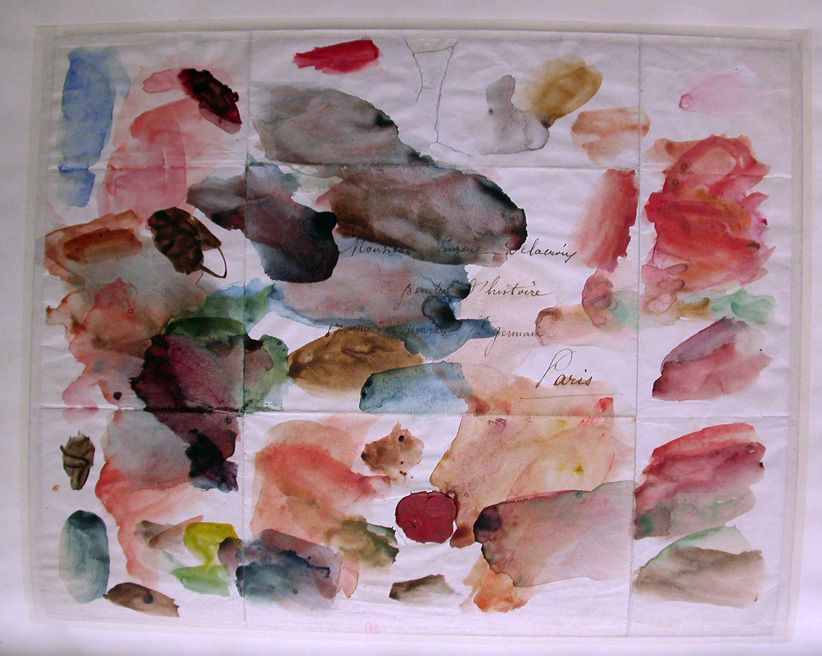- Accès directs
Anna Ripatti Chercheuse invitée
Avril-mai 2022
Anna Ripatti currently works as a research fellow at the University of Helsinki. She specializes in 19th-century architecture and visual culture, and she is particularly interested in cultural, intellectual, political and social histories of built environment. Her doctoral thesis (2011) examined the restoration of medieval castles and their political meanings in late 19th-century Finland. Since then, she has published several monographs, edited volumes and research articles on the history of Nordic architecture, architectural discussions and the historiography of art and architecture in transnational perspectives. She has written, for instance, on the agency of architectural ornament in Scandinavian farm buildings and how a new national architectural style was conceptualized as an export commodity in 19th-century Sweden. Her on-going research project examines architectural standardization and the formation of class and gender through architecture in mid-nineteenth-century France. She is also the PI of the research project The Political Agency of Architecture in Revolutionary Europe 1830–1930 at the University of Helsinki, Finland.
Publications (selection)
Petra Lehtoruusu & Anna Ripatti: L’Histoire dans l’art d’Albert Edelfelt, Albert Edelfelt. Lumières de Finlande. Paris: Petit Palais, 2022, pp. 75–84.
’This Hidden Corner of Europe’: Evaluating Medieval Architecture in Nineteenth-Century Finland, The Journal of Architecture 25:8 (2020), 1002–1027, DOI: 10.1080/13602365.2020.1849354.
Printing a New Architectural Style in Mid Nineteenth-Century Sweden, The Journal of Architecture 25:7 (2020), 873-900, DOI: 10.1080/13602365.2020.1828995.
Gustaf Nyström ja Suomen puukirkkojen ainutlaatuisuus [Gustaf Nyström and the Historiography of Wooden Church Architecture in 19th-century Finland], Tahiti Journal 10:1, 2020, pp. 56–75.
Monumenteista tanssiaskeliin: Taiteiden ja kulttuurin Viipuri 1856–1944 [From Monuments to Dance: Arts and Culture in Vyborg 1856–1944], ed. with Nuppu Koivisto. Helsinki: The Finnish Literature Society of Viipuri, 2020, 407 pages.
Modernizing Architecture and Ornament on Mid-Nineteenth-Century Scandinavian Farms, The Journal of the Society of Architectural Historians 78, no. 1, March 2019, pp. 68–89.
Suuren muodon jäljillä: Klaus Holman tutkimus romaanisesta taiteesta [In Search of a Grand Form: Studies on French Romanesque Art and Architecture by Klaus Holma in the 1940s], Kauneus, arvo ja kadonnut menneisyys. Näkökulmia Klaus Holman muistokokoelmaan [Perspectives on the Klaus Holma Memorial Collection]. Studies in Art History 49. Eds. Elina Räsänen & Visa Immonen. Helsinki: The Society for Art History in Finland, 2018, pp. 179–97.
Jac. Ahrenberg ja historian perintö: Restaurointisuunnitelmat Viipurin ja Turun linnoihin 1800-luvun lopussa [Jac. Ahrenberg and Patrimony: Restoration Plans for Vyborg and Turku Castles at the End of the 19th Century]. Helsinki: Finnish Antiquarian Society, 2011, 285 pages.
Ruins and Dream Images: Restoring Castles in fin-de-siècle Finland, Mind and Matter: Selected papers of Nordik 2009 Conference for Art Historians. Studies in Art History 41. Ed. Johanna Vakkari. Helsinki: The Society for Art History in Finland, 2010, pp. 228–41.
The Architect Jac. Ahrenberg and Studies on Turku Castle at the Turn of the 20th Century, The Shaping of Art History in Finland. Studies in Art History 36. Ed. Renja Suominen-Kokkonen. Helsinki: The Society for Art History in Finland, 2007, pp. 53–66.
Research project
Building Social Order: Architectural Standardization and the Working Class in Mid-19th-Century France
The project examines the politics and practices of planning everyday buildings for the working people in mid-19th-century France (ca. 1830–1870). It explores the ways in which the working class was created through architecture at the time of rapid industrialization, social unrest and revolutions. Focusing on specific case study model plans for workers’ houses, public baths, laundries, schools, kindergarten and Catholic churches, it studies the plans in the contexts of political, aesthetic and ideological discussions about architecture, standardization, mass production and the working class. This project seeks to demonstrate that the standardization of buildings for the working people played an important and inherently political role in the making of modern France. It substantially broadens the current understanding of the history of architecture and the ways in which ordinary environments shaped modern people and society in the 19th century.














